Company: McDonald’s Corp.
CEO: Chris Kempczinski
Founders: Richard and Maurice McDonald’s
Year founded: 1940
Headquarter: Chicago, Illinois
Number of Employees (FY 2023): 150,000
Type: Public
Ticker Symbol: MCD
Annual Revenue (FY 2023): $25.49 Billion
Profit |Net income (FY 2023): $8.46 Billion
Products & Services: Fast food and Beverages
Competitors: Burger King | Chipotle | Wendy’s | Shake Shack | KFC | Chick-Fil-A | Subway | Dunkin Donut | Panera Bread | Starbucks
Did you know
The Big Mac is not just a burger. It’s a financial indicator! The Big Mac Index was introduced in the mid-80’s by The Economist. Intended as a semi-humorous measure of purchasing parity between currencies, it compares the relative price of the burger worldwide.
Introduction
McDonald’s is one of the most celebrated fast-food chains worldwide. This American food restaurant was founded in 1940 by two brothers, Richard and Maurice McDonald.
The first McDonald’s stall was a San Bernardino, California BBQ joint. After eight years, it was converted into a fast-food restaurant.
In 1955, Ray Krok was brought on as a franchise agent. Krok started his first franchise in Des Plaines, Illinois, and in 1961, he bought the enterprise from the McDonald brothers.
Today, McDonald’s Corp. is the largest fast food chain in the world, with more than 40,000 locations in nearly 120 countries, including the US, Australia, Canada, France, Germany, the United Kingdom, China, Italy, Korea, Poland, Russia, Spain, Switzerland, the Netherlands and many other countries in the world.
Let’s explore our latest SWOT analysis of McDonald’s. It reveals how the most thriving food chain business of all time uses its competitive advantages to continue ruling the fast-food industry.
McDonald’s Strengths
The following factors are McDonald’s most potent strengths, which have ensured the company’s profitability, continued development, and universal brand recognition, making the Golden Arches recognized globally.
1. Brand Value and Recognition
According to Interbrand, McDonald’s is the 11th most valuable brand in the world. With an incredible brand value of $51 billion, the company rules the fast-food industry despite fierce competition. No other fast-food brand is even close to McDonald’s worth in terms of brand value. The next closest competitor is Starbucks, with a brand value of $15.4 billion.
2. Global Reach
McDonald’s has a huge network of outlets and reaches millions of customers daily. In 2023, there were 41,822 restaurants in 119 countries. This global presence provides strategic advantages, including economies of scale, diverse revenue streams, and risk mitigation.
As new markets develop, McDonald’s is often among the first global chains to establish a presence. Products tested in one region can be adapted in others, meaning a high level of market responsiveness.
3. Tasty Food & Diverse Menu
McDonald’s has diversified its menu over the years, taking into account tastes and dietary preferences in different markets. The company has also introduced healthier options and local dishes in addition to traditional burgers, fries, and breakfasts.
McDonald’s fries are considered the best-tasting fries in the fast food industry, according to a consumer survey.
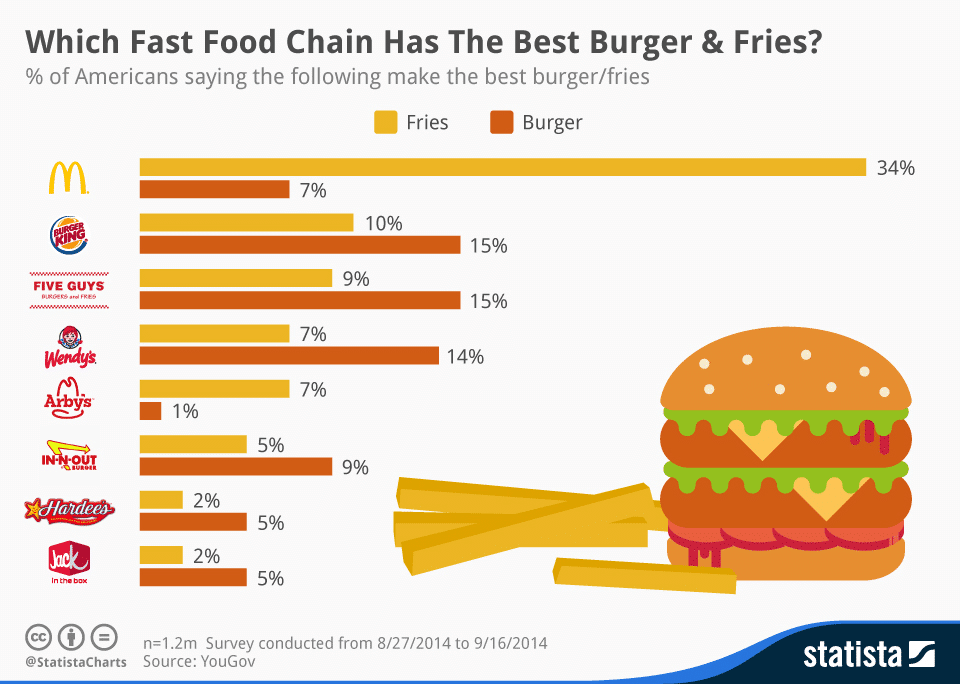
Source: Statista
4. McDonald’s – A Real Estate Company
Very few people know that apart from selling burgers and fries, McDonald’s has a multi-billion dollar real estate empire. Imagine having tens of thousands of premium real estate locations around the globe.
As of 2023, there were 41,800 franchised restaurants and company-operated restaurants.
McDonald’s franchises work slightly differently. McDonald’s provides their brand name, recipes, ingredients, and processes to franchisees and owns the land and operates as a landlord, making revenue through rent payments.
Number of McDonald’s restaurants worldwide from 2005 to 2023
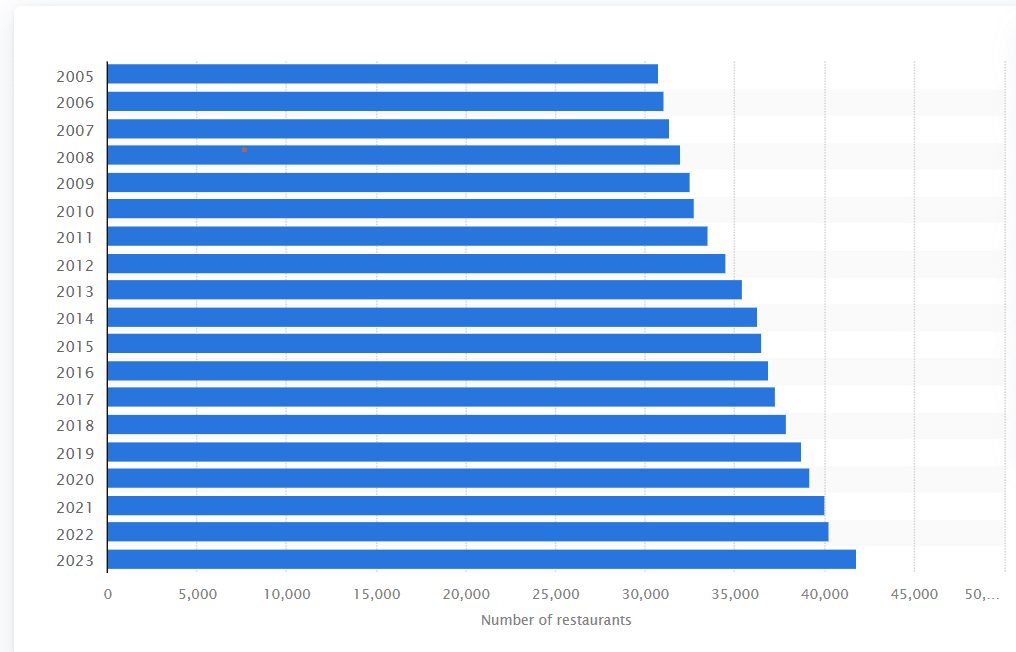
Source: Statista
5. Logistics and Supply Chain
McDonald’s has a robust, highly efficient supply chain, giving it consistent supply, quality and cost control across its global network.
Centralized purchasing allows McDonald’s to negotiate favorable terms with suppliers, which helps reduce costs. However, the company also emphasizes local sourcing of some ingredients, reducing environmental impacts and allowing McDonald’s to adapt to local food regulations and consumer preferences.
Sophisticated inventory management and highly efficient distribution centers add to efficiencies.
6. Technology Initiatives
McDonald’s drives innovative tech initiatives for its ‘Experience of the Future’ vision. Dynamic menu boards powered by artificial intelligence adjust real-time offerings based on weather, time of day, popular orders, and restaurant traffic.
Integrating self-service kiosks, mobile ordering, and advanced payment systems contributes to McDonald’s positioning as the ‘restaurant of the future.’
These technologies can also improve order accuracy and customer service, which can lead to sales growth.
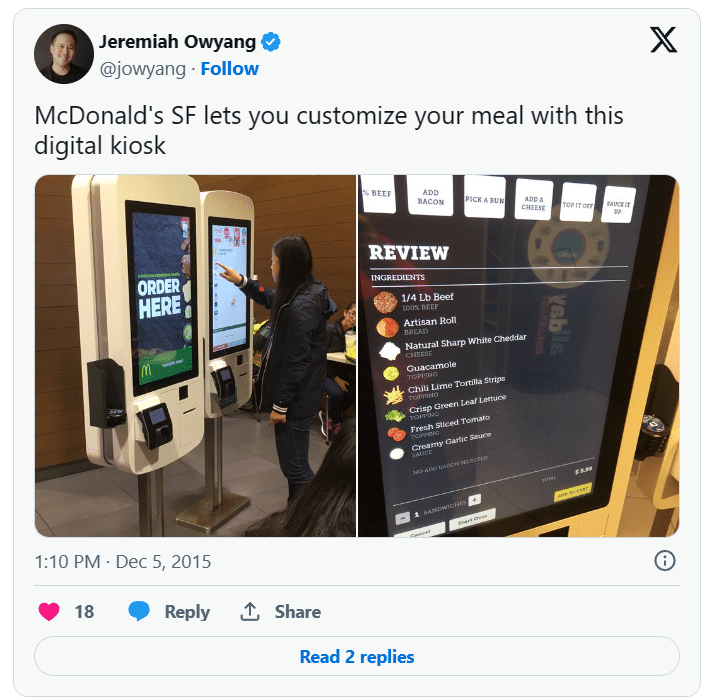
7. Technology Acquisitions
The company’s acquisition of ‘Dynamic Yield‘ is another step towards enhanced personalized marketing and customizations. Dynamic Yield is an Israeli startup that helps brands like McDonald’s boost their customer experience through personalized product recommendations and offerings, is another step towards enhanced personalized marketing and customizations.
8. Improved Quality Control and Health Protocols
You can debate the taste and overall customer experience, but McDonald’s’ quality standard has always been its strong point. The Company enforces complete food safety and quality protocols before buying the ingredients from third parties.
Recently, McDonald’s began restricting the use of high-value human antibiotics in its chicken supply. The World Health Organization (WHO) defined these antibiotics as “highest priority critically important antimicrobials” (HPCIA) in human medicine.
Many public health and consumer groups also appreciate the policy, which aims to prevent dangerous superbugs.
9. Leading quick-service restaurant
In 2023, McDonald’s was the leading quick-service restaurant (QSR) chain with revenue of $25.49 billion.
About 38% of the sales revenue is generated by company-operated restaurants, and 61% by franchised restaurants in the form of franchise fees and development licenses. The remaining 1%of the revenue is attributed to other categories (technology fees, brand licensing arrangements).
10. McDonald’s Offer Discounts to Front Line Workers
The fast food giant offered a 20% discount for National Health Services (NHS) workers for 2022 across the entire UK. Workers could use the discount on McDonald’s entire online menu. The discount was meant as an initiative for NHS workers to save money on their favorite items on the menu.
However, the primary reason why the fast food giant offered this amazing discount deal was to show its appreciation to the frontline workers, appreciating their hard work amidst the deadly outbreak.
11. Global Hub of Excellence
McDonald’s flagship training facility, Hamburger University, is more than just a conventional school—it’s an exciting adventure. It is dedicated to developing employee skills and knowledge in restaurant operation procedures, including value, quality, service, and cleanliness around the globe.
Hamburger University is well-known globally. Its campuses are in major cities around the world, including Chicago, Hong Kong, Sydney, Tokyo, and Hamburg.
12. CosMc’s
McDonald’s has introduced CosMc’s, a small-format restaurant that combines technological magnificence with a nostalgic aesthetic. A drive-through-only concept location opened in the Chicago area in December 2023.
It all comes down to serving customers delicious sweets and exciting beverages, adding some spice to the menu, and demonstrating that McDonald’s can keep up with the times.
It’s amazing how they’re fusing elements of the alien world with our beloved classics. McDonald’s has said, “We’ve got the coolest mash-up for your taste buds.”
At CosMc’s, everyone is focused on making things easy. The scenario of drive-through and digital? When it comes to customization and convenience, McDonald’s is unmatched. “Your experience, your way!” they exclaimed. What is McDonald’s advantage? It provides you with a delightful and unique eating experience.
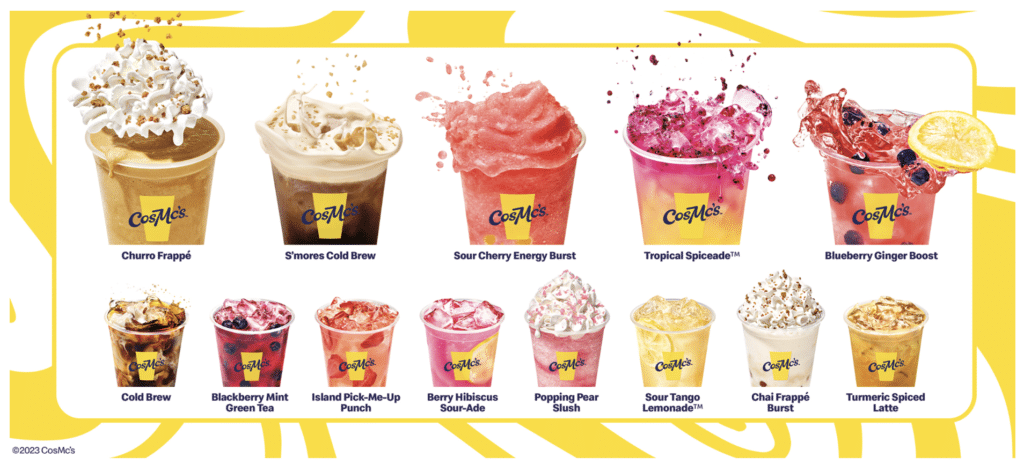
Image source: CosMc’s
13. Mobile Order and McDelivery
McDonald’s has partnered with Uber Eats and DoorDash to deliver US food. These mobile order and delivery initiatives help McDonald’s meet customers’ ever-changing needs.
This strategic partnership improves accessibility, customer satisfaction, and loyalty by broadening McDonald’s reach in the cutthroat meal delivery market while simultaneously meeting the changing expectations of its clientele.
McDonald’s Weaknesses
Here are some of McDonald’s shortcomings in strategy and structured composition, which affect its overall success.
1. The Franchise Business Model
McDonald’s is the best example of an international franchising model. And while this model can facilitate growth, it also presents significant challenges. Having this complicated web of franchised and company-operated restaurants exposes the brand to certain risks.
The risks include financial deterioration, mismanagement, customer dissatisfaction, and low revenue generation. The company heavily depends on the franchises, which work independently. McDonald’s has limited control over its day-to-day performance, but its performance affects the brand directly.
2. Health Focus and Perception
McDonald’s has tried to introduce healthier options, but it is still often associated with foods high in calories and fat. This perception turns off health-conscious consumers and could impact future growth in markets where health is increasingly focused.
An additional focus on healthy options could help turn this around.
3. Market Saturation
Market saturation is an issue in some locations, particularly in the United States. A saturated market means limited opportunity for growth. Many locations that can support a McDonald’s restaurant already have one, if not more. This makes it challenging to open new locations without negatively impacting existing outlets.
Fast-food market saturation can also lead to price wars and the need to offer discounts and promotions. While these measures can bring in more customers, they also reduce profit margins.
4. Labor issues and Lack of Employee Satisfaction
Due to recent employee rights revolutions worldwide, many organizations have faced the issue of dissatisfied employees.
Recently, McDonald’s faced a backlash from its workforce, as many took part in protests and strikes demanding an increase in the minimum wage, causing the company reputational harm.
High staff turnover leads to increased hiring and training costs and can affect the consistency and quality of food. Criticism and negative publicity related to labor practices can lead to public relations problems.
5. Dependency on Regional Economic Conditions
Since it operates worldwide, McDonald’s revenues depend on specific countries’ economic conditions. The country’s overall profitability suffers if there are economic downturns in key markets.
6. Negative Publicity
In June 2020, McDonald’s was accused of firing an employee for suing the company for failing to protect employees during the recent health crisis. The accusation said the termination was unethical because it sought to discourage other employees from exercising their right to legal redress against their employer.
In November 2019, McDonald’s CEO Steve Easterbrook was fired after having a relationship with an employee. This violated company policy, and the company’s board stated that Easterbrook had “demonstrated poor judgment.”
7. Over-Reliance on the US Market
In 2023, McDonald’s recorded revenue of $10.38 billion in the United States alone. All other markets combined provided $14.75 billion. Due to its vulnerability to political or economic turmoil in the US, the company may encounter challenges that negatively impact its total profitability.
8. Brand Vulnerability
Financial outcomes might be impacted if brand value fails to be preserved. Success hinges on preserving, enhancing, and leveraging brand value, including corporate purpose, mission, and values.
9. Price Fluctuations
Ingredient costs are on the rise. The prices of beef, chicken, and dairy products fluctuate globally and have been increasing. Due to its large-scale operations, this can pose significant challenges and affect profitability. With a brand promise of affordable food, there is limited opportunity to pass the cost increases on to customers.
McDonald’s Opportunities
The following opportunity section for McDonald’s emphasizes emerging growth opportunities. These opportunities can help the company improve its business performance, management structure, strategic growth, and other aspects of its business.
1. Emerging Markets and Global Expansion
Rising incomes and growing cities in emerging markets, along with the rising demand for fast food in new and expanding markets, mean McDonald’s has growth potential.
Notably, the global fast food market size was USD $862.05 billion in 2020 and is projected to grow to USD 1,467.04 billion by 2028 at a CAGR of 6.05% during the 2021-2028 period.
When examined as a whole, the total industry value (TIV) of the global foodservice market is USD $2.52 trillion (2021) with forecasts of reaching USD $4.43 trillion in 2028.
2. Sustainability and Environmental Initiatives
Consumer and government pressure is faced by all organizations to reduce their climate-changing emissions and increase their sustainable practices. McDonald’s has an opportunity to be a leader in environmental initiatives.
Green technology and sustainability are growing markets worth USD $14.3 Billion in 2023 with a projected CAGR of 19.5% in 2023 – 2032. By tapping into this market, McDonald’s can find cost efficiencies and possible revenue in new growth opportunities.
While efforts have been made in this area, additional sustainability and environmental practices remain to be implemented. Ethically sourced ingredients, reduced packaging and plastic use, and improved energy efficiency are examples of ways to appeal to consumers concerned about the environment and ethics.
3. Value Meals
Global inflation has impacted consumers and businesses with less disposable income being available for purchases like fast food. Inflation peaked in 2022 at 8.73% globally and, while inflation has decreased, consumer hesitation is still a concern. Opportunities remain for McDonald’s to boost sales by featuring additional value-focused menu items.
In 2018, McDonald’s launched its “$1, $2, $3” menu and “2 for $5 Mix and match deal” aimed at its value-conscious consumers. The menu has been a successful addition, resulting in increased sales. McDonalds must continue to provide offerings for this segment of the market.
4. Increase Healthy Offerings
More consumers are seeking healthier food choices for their families and societal pressure continues to increase on companies to provide options. The global health food market, valued at USD $802 million in 2022, is predicted to achieve a CAGR of 9.5% in the 2023 – 2030 period.
While fast-food restaurants are struggling to fight the image of ‘junk producing centers’, McDonald’s can gain an advantage by continuing to expand its aggressive initiatives toward healthy, customized offerings.
In the long run, a healthier image for McDonald’s can only be a good thing and attract a wider base of customers.
5. Expand Drive-Ins, Pick-Ups, and Self-Order Kiosks
Maturing business models such as delivery-only outlets (sometimes called ‘ghost kitchens’) provide an opportunity to meet new demands and preferences. Worldwide online food delivery is forecasted to be a USD $1.2 trillion market in 2024 with a CAGR 2024-2029 of 9.04%.
Demand must be met and McDonald’s can take advantage of this rapidly emerging market with creative solutions.
6. McDonald’s McPlant Expansion
A rising demand by consumers for alternative meat options is forcing companies to find new solutions. The plant based food market is forecast to reach USD $113 billion by 2031 with estimated CAGR of 12.3% in the 2024 to 2031 period.
Expanding meatless options can help McDonald’s appeal to consumers who want to reduce meat consumption. Focused product development will be key in conquering this segment.
The McPlant is a vegetarian (or, in some countries vegan) burger available in several European countries, offered in partnership with Beyond Meat. While initial testing in the US did not result in the McPlant being added to the permanent menu, changing attitudes mean future potential for meat-free menu items.
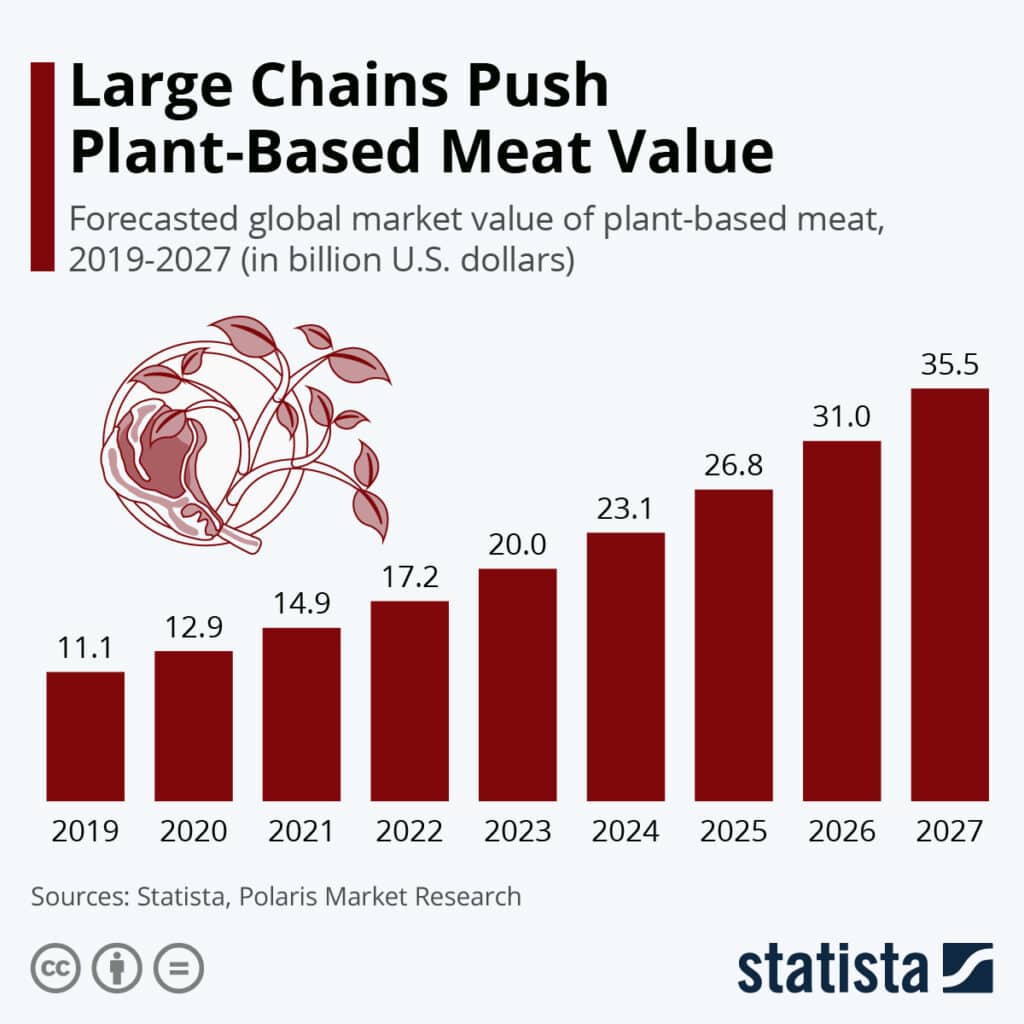
Source: Statista
7. Dining Expansion
As the pandemic restrictions have eased, diners have returned in force to restaurants. According to Technavio, the dining-out market is predicted to grow by 9.58% by 2028, reaching an incredible total value of USD 1035 billion.
This surge may be attributed to the global restaurant industry’s growth and the continuous innovation of menu items.
With this wave, McDonald’s has an exceptional chance to adjust to changing consumer tastes and keep its top spot in the growing dining-out industry.
McDonald’s Threats
Threats can prevent the company from fully utilizing its strengths and taking advantage of opportunities. Here are some of the threats that McDonald’s faces.
1. Risky Technology Investments
Although the innovative changes made by McDonald’s have a positive outlook, investments in technology are still risky.
The public pace of adapting new technologies may slow down the return on investment, and the results of enhancing customer experience may generate a different expected return.
Technology also increases the risk of cybersecurity data privacy issues, and guarding against these issues increases costs.
2. Fierce Competition from Competitors
We might think that burger giants like ‘Burger King’ are McDonald’s only competitors, but the table is beginning to turn.
Consumers looking for more variety and options have plenty to choose from, and competitors like KFC, Taco Bell, Pizza Hut, and Chipotle are also on the ever-expanding list of competitors.
3. Cultural Threats in Various Countries
As a global fast-food chain, McDonald’s has often faced multiple cultural threats in different parts of the world, harming the brand’s image.
It is also challenging to adapt and operate differently depending on each franchise’s location. For example, a few years ago, McDonald’s faced quite a big scandal for using ingredients that were not halal in Muslim countries.
Such controversies make it difficult for McDonald’s to meet customer expectations, with inherent risks in the international operating environment deteriorating the brand image.
4. New Age Fast Food Trends
McDonald’s is often seen as old-school, with its traditional menu and taste. In this situation, food chains like Shake Shack and Wendy’s take full advantage of their experimental menu and recipes to include variety.
For example, McDonald’s failed to compete with Wendy’s “Signature-Crafted Burgers.” and had to stick with its conventional Quarter-Pounders to save face.
5. McDonald’s Social Advertisements are Impacting the Health of Youth globally
According to a study, popular fast food brands such as McDonald’s are targeting their social ad campaigns on underprivileged or low income communities across the world.
McDonald’s is using popular, mainstream social media networks such as Instagram, Snapchat, Twitter, and Facebook to propel its marketing, reaching millions of youth worldwide. The study also notes that this marketing is beginning to have a negative impact on youth health and can lead to dangerous repercussions later in life.
6. Supply Chain Interruptions
McDonald’s, one of the busiest food chains, often faces issues due to disruption in its supply chain. This also limits the availability of products which are critical to the operations.
Therefore, when a franchise experiences such interruptions, the operational expense increases, which reduces revenue and lowers profitability.
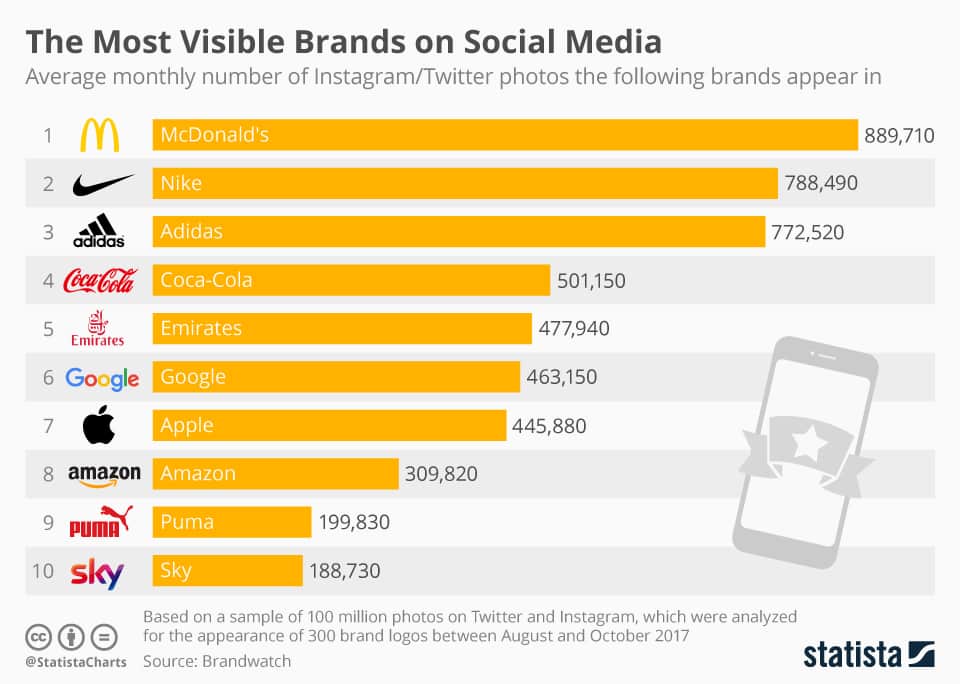
Image source: Statista
7. Economic Uncertainty
Even titans like McDonald’s feel the heat in the face of economic ups and downs. Managing unexpected market turns, hiccups in the supply chain, and shifting consumer patterns is not simple.
Global instability in economic markets can negatively impact profits. A recession, for example, tends to reduce consumer spending, especially for non-essential items like take-out or dine-in foods.
8. The Rise in Health-Consciousness
More consumers are adopting healthy lifestyles and switching to healthier alternatives like salads and organic shakes. Unfortunately, many items on McDonald’s menu are not considered healthy, and it can lose health-conscious customers to competitors who offer healthier options.
According to Statista Consumer Insights, half of Americans claim to prioritize healthy eating, although a significant 36% still turn to fast food, as reported by the CDC. Healthy eating will likely be prioritized by more people in the future.
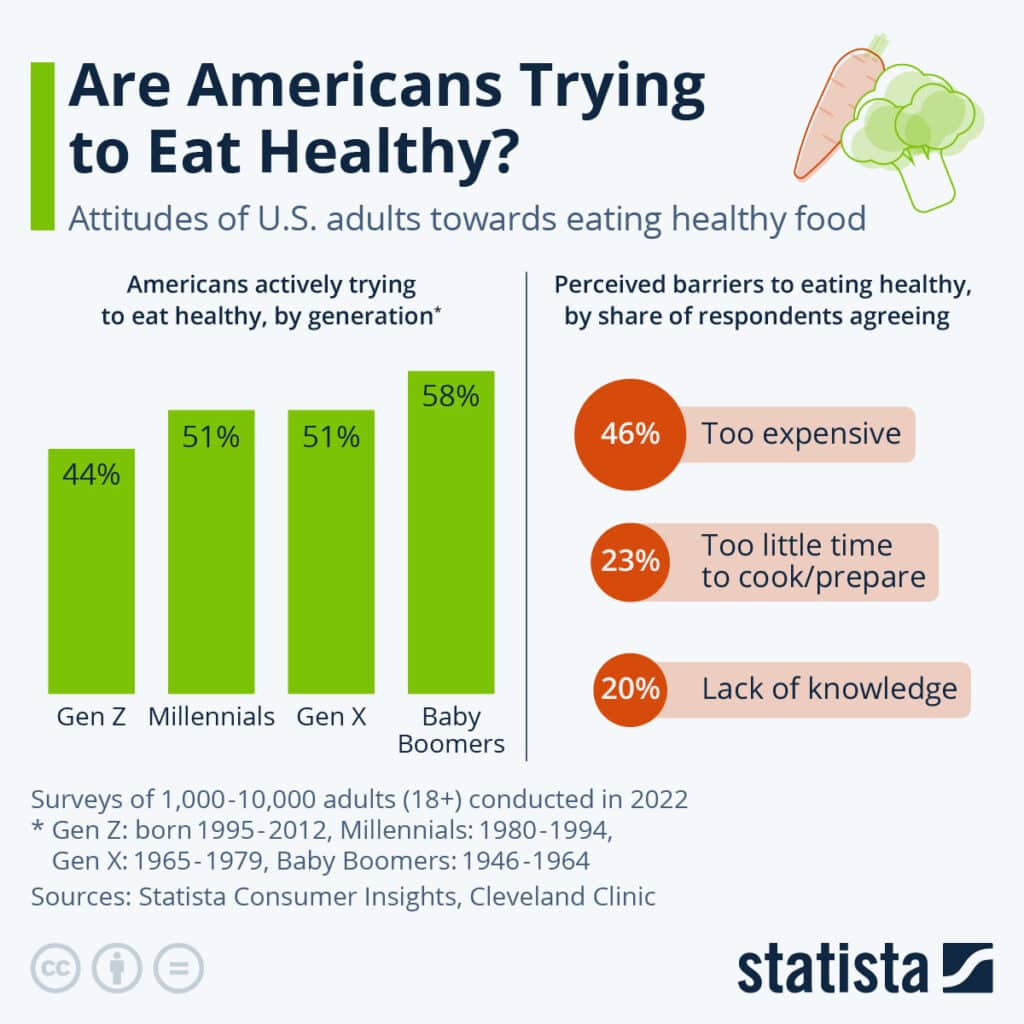
Source: Statista
9. Tighter Regulations
The rise in lifestyle diseases is a burden for many countries. Increased government regulation related to nutrition and advertising can increase costs for brands like McDonald’s. Some countries have enacted laws to limit the use of specific ingredients. And some countries have gone as far as banning McDonald’s altogether.
10. Constant Environmental Concerns
Like every other food giant, McDonald’s faces immense pressure to improve its practices to minimize waste, which causes environmental pollution.
The growing ecological concerns demand that McDonald’s take the initiative and set an example for other food outlets. Some countries are banning single-use plastics, like drink straws, which will force change.
11. Intense Competition
McDonald’s is in the thick of it when it comes to competition! They’re not just competing with other big global names but also with local and national players in the traditional, fast casual, and food service scenes.
It’s a real battle on multiple fronts where price, convenience, service, experience, and product quality are the weapons of choice.
According to Euromonitor International, things get even more interesting when you zoom into the informal eating out (IEO) segment. There’s a whole lineup of quick-service and diverse joints is all eyeing that market share. It’s like a constant challenge for McDonald’s, with competitors always on the horizon, ready to shake up the company’s dominance.
12. The ESG Challenge
As stakeholders increase their scrutiny of Environmental, Social, and Governance (ESG) problems, McDonald’s faces a rising risk. Ignoring ESG issues might damage the brand by impacting labor, supply chain dynamics, and customer behavior.
In the changing ESG landscape, initiatives like climate change management and responsible sourcing are under more scrutiny, which might put the firm at risk for additional expenses and damage to its brand.
13. Weakened Low-Income Consumers
McDonald’s, expecting a resilient consumer base, is now contending with reduced spending from low-income customers, sparking concerns about its financial outlook. Analysts express worry about the potential impact on the company’s overall performance.
14. Class Action and Individual Lawsuits due to Poor Employee Safety
In early 2024, two female employees launched a class action lawsuit, claiming McDonald’s failed to provide a proper place for them to express breast milk, as required by US law.
In May 2020, five employees sued McDonald’s for failing to adopt government safety guidance. The lawsuit argueds that McDonald’s endangered the lives of its employees and their families by failing to provide hand sanitizer, gloves, and masks during the recent health crisis.
McDonald’s has also been accused of sexual assault, harassment, racism, and bullying by over 100 UK employees.
The corporation acknowledges failing to meet expectations, compromising its commitment to a safe workplace.
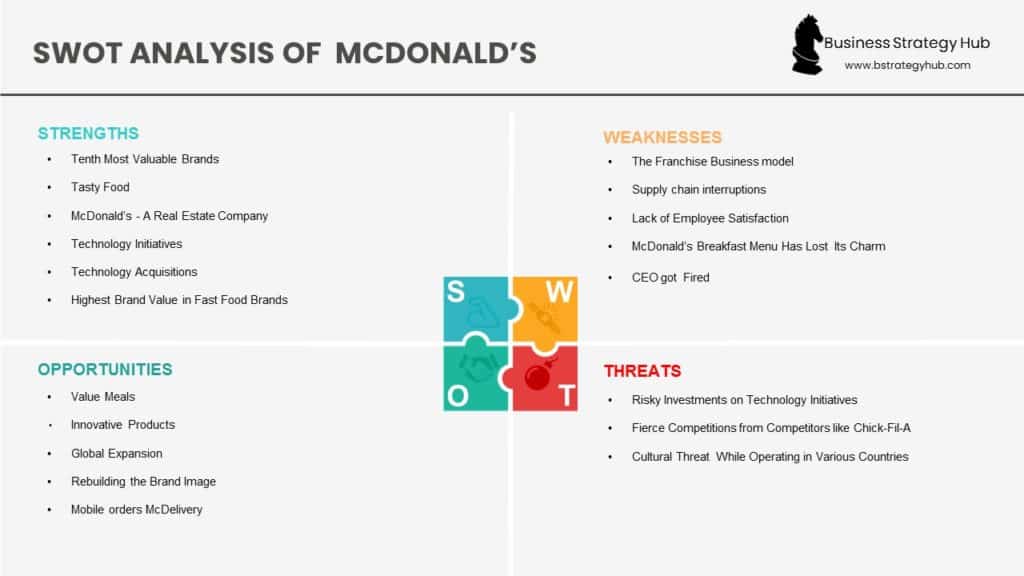
SWOT Analysis of Macdonald’s
Conclusion
McDonald’s is one of the most powerful food brands of all time, realizing incredible globalization and customer loyalty. But despite the company’s legacy, it needs to keep an eye on issues that can cause trouble and disrupt its market leadership.
McDonald’s has many significant strengths, including brand recognition and a huge market presence, but it also has weaknesses, such as labor and supply chain issues.
McDonald’s must take advantage of opportunities to innovate and respond to consumer concerns in order to continue its legacy while managing and mitigating threats such as class-action lawsuits.
References & more information
- Hals, T. (2020, May 19). U.S. workers hit McDonald’s with class action over COVID-19 safety. Reuters
- Pierson, B. (2020, April 13). McDonald’s faces new class action over ‘pervasive sexual harassment’. Reuters
- Eidelson, J. (2020, June 19). McDonald’s Accused of Firing Worker Who Sued Over Covid-19 Claims. Bloomberg
- Malacoff, J. (2020, January 17). The Healthiest Things You Can Order from the McDonald’s Menu, According to Nutritionists. Shape
- Lucas, A. (2020, April 30). McDonald’s earnings fall 17% as coronavirus leads to restaurant closures, plunging sales. CNBC
- Balu, N. (2020, April 30). McDonald’s profit misses estimates, shares drop 4%. Reuters
- Lucas, A. (2020, June 16). McDonald’s to bring back some menu items cut during the pandemic. CNBC
- Jones, M. (2020, Jan. 03). 9 Countries That Have Banned McDonald’s. Reader’s Digest
- Consumer Affairs (2024, May 3) Study Reveals Best Fries in Each State
- Statista, (2024, May 3). Leading QSR Chains in the US
- Medical News Today (2022, Jan. 6).How McDonald’s Social Ads Impact the Health of Global Youth
- Statista (2024, May 3) Number of McDonald’s restaurants worldwide from 2005 to 2023
- Fortune Business Insights (July 1, 2024) https://www.fortunebusinessinsights.com/fast-food-market-106482
- Global Market Insights https://www.gminsights.com/industry-analysis/green-technology-and-sustainability-market
- Statista (2023) https://www.statista.com/statistics/256598/global-inflation-rate-compared-to-previous-year/
- Statista (2024) https://www.statista.com/statistics/194988/customer-satisfaction-with-us-limited-service-restaurants-since-2006/
- Data Bridge Market Research (November 3, 2023) https://www.databridgemarketresearch.com/press-release/global-health-and-wellness-food-market
- Statista (2024) https://www.statista.com/outlook/emo/online-food-delivery/worldwide
- Meticulous Research (March 2024) https://www.meticulousresearch.com/product/plant-based-food-market-5108
- Statista (2021) https://www.statista.com/statistics/1095667/global-food-service-market-size/
Tell us what you think? Did you find this article interesting? Share your thoughts and experiences in the comments section below.

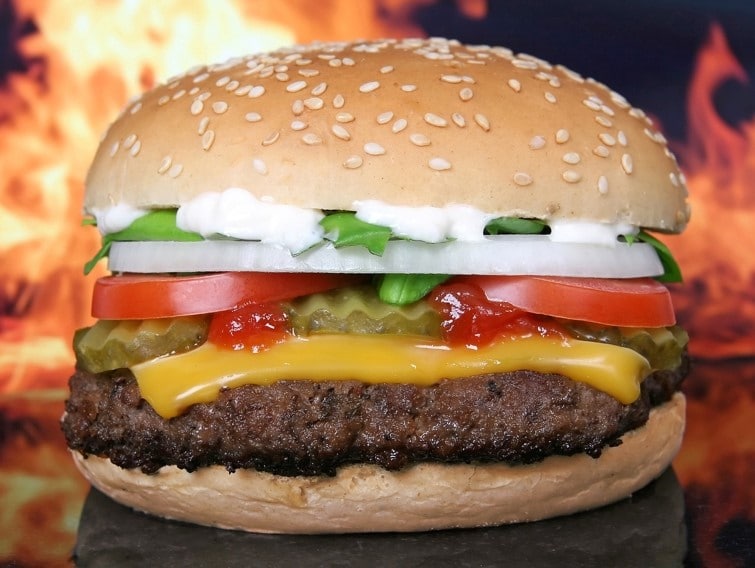







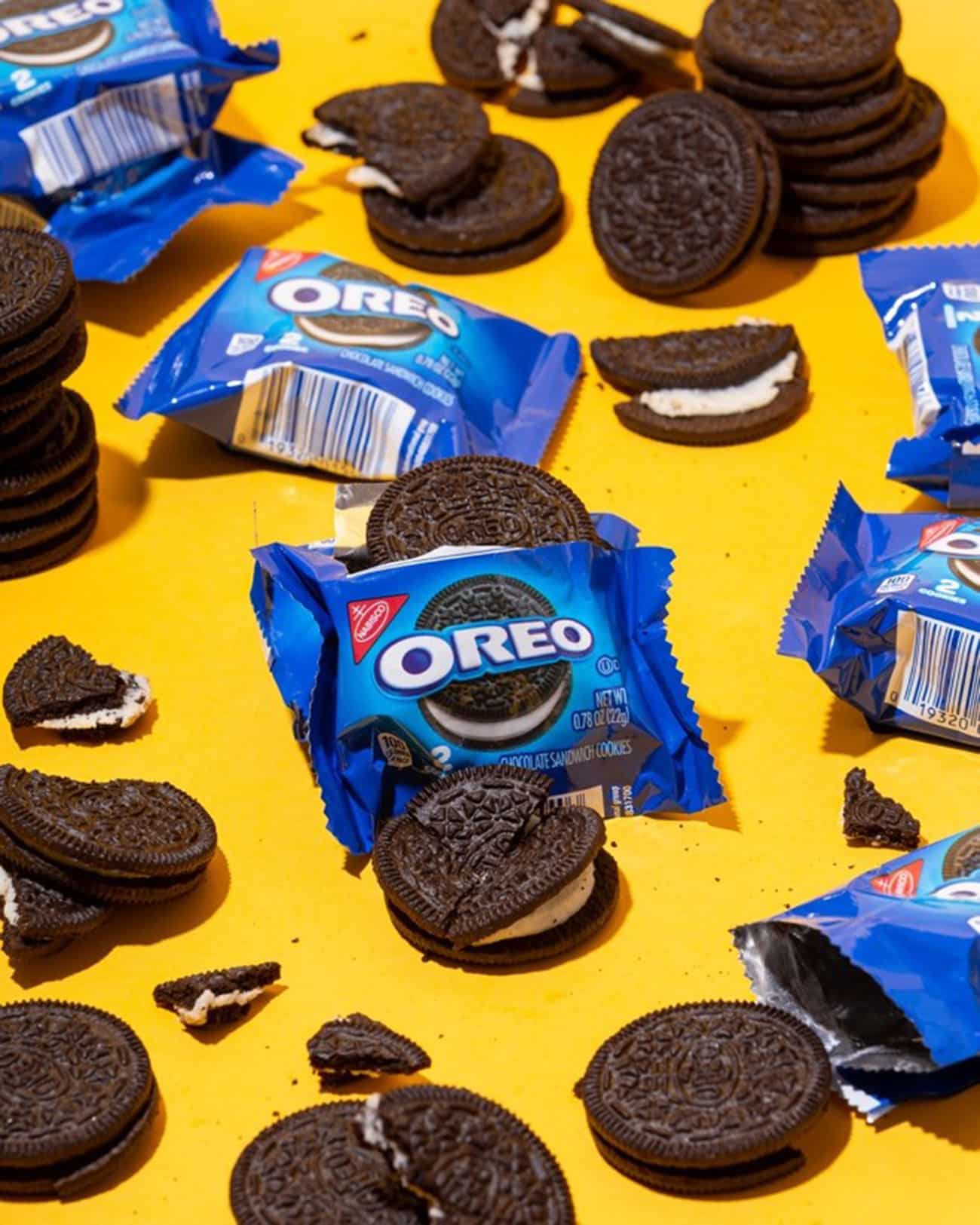


Thanks for preparing this precious information, it helped to me in a big way. Overall it´s recent information and very entire.
Thank you Rebeca for the kind words, I am glad you liked our analysis.
And, yes we try to add recent information on regular basis.
Hmu sweet stuff
freaky ahh
Very well written swot analysis. This has helped me tremendously. Thank you.
Hi L Holman,
I am glad you liked our analysis.
Happy reading !
Thank you very much for your SWOT Analysis. It is of great help.
Thanks Fely,
Happy reading !
Hats off for the work sir
Thanks Shivam, Glad you liked the analysis!
u indian too my friend
nice post
OK MCKENNA
good one
your stinky ew
I’m Lovin’ It
I’m Lovin’ you 😉
This analysis has changed my life forever, I have been looking for 30 years for this. This has helped me greatly in the Elderly People’s home in the quiz section. I do emplore that every single person that has visited this website like and comment to give it more traction. Thank you
for real, this is the holy grail of analysis